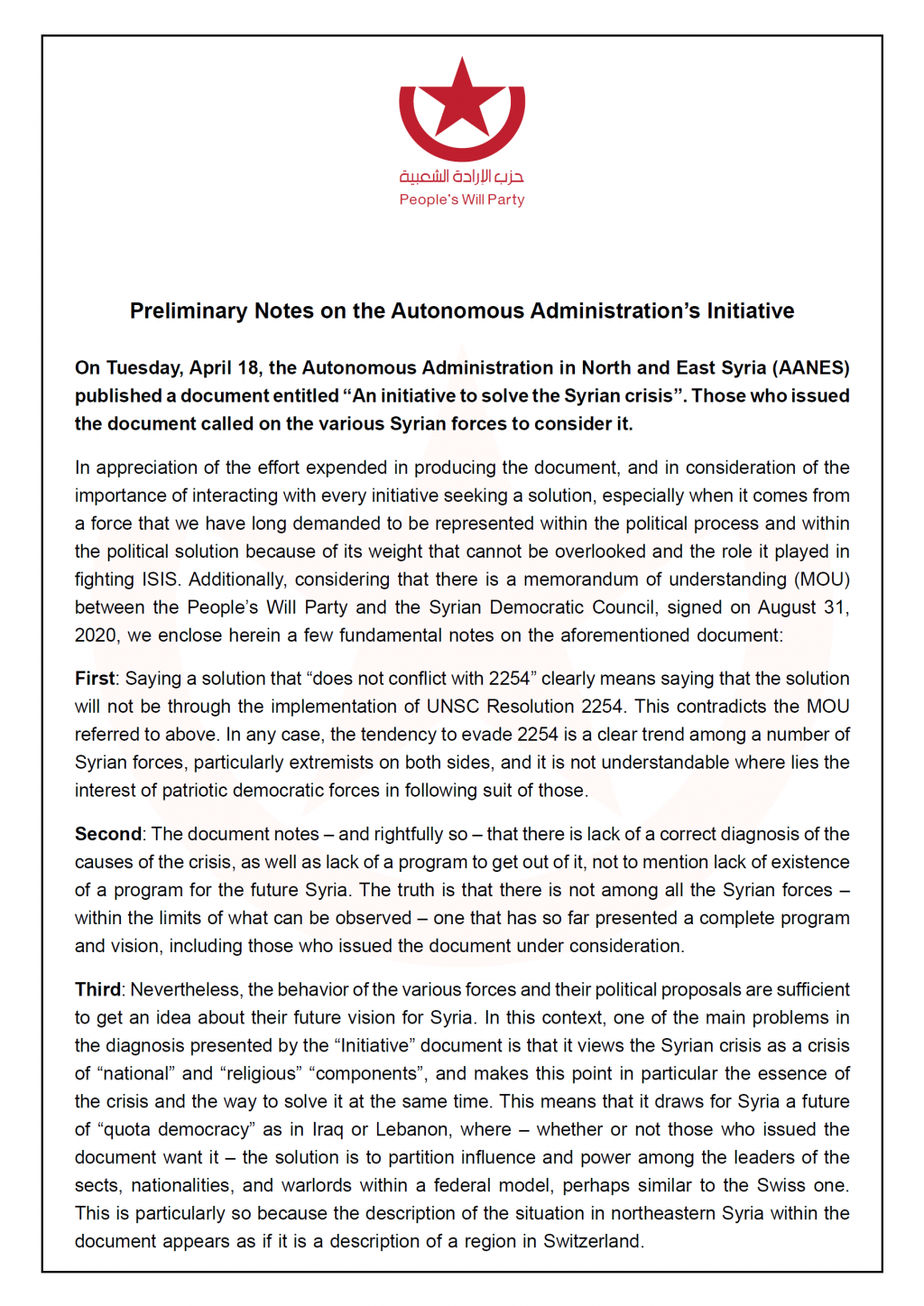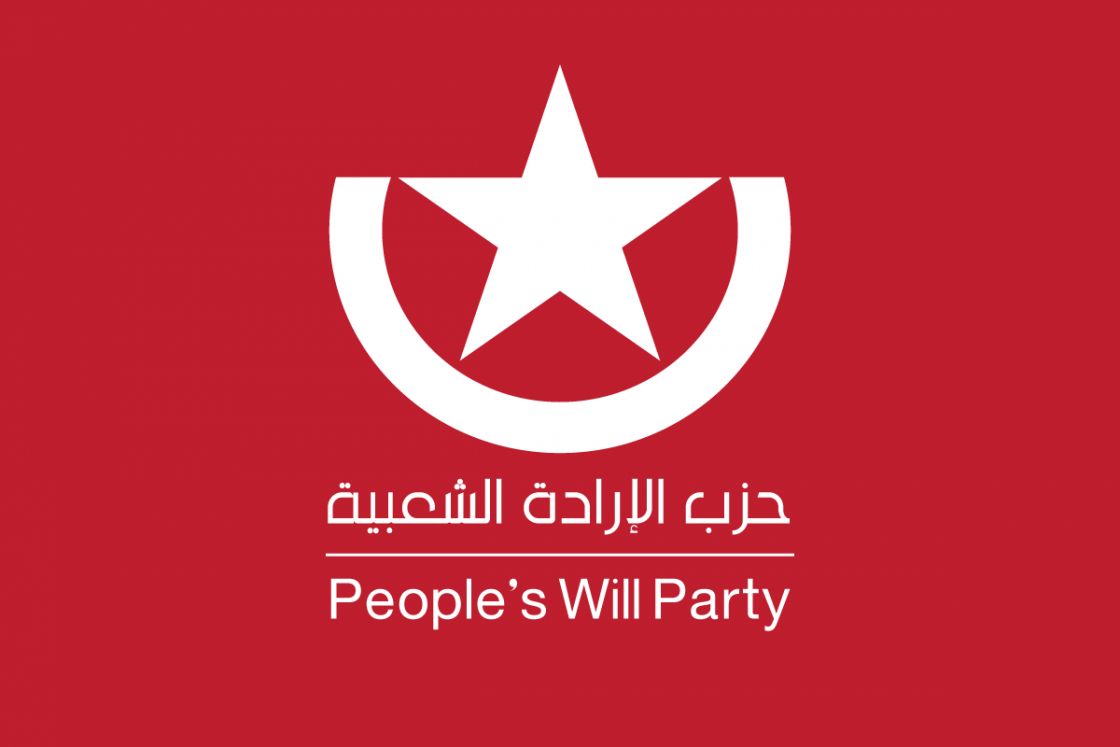- Statements & Documents
- Posted
Preliminary Notes on the Autonomous Administration’s Initiative
On Tuesday, April 18, the Autonomous Administration in North and East Syria (AANES) published a document entitled “An initiative to solve the Syrian crisis”. Those who issued the document called on the various Syrian forces to consider it.
In appreciation of the effort expended in producing the document, and in consideration of the importance of interacting with every initiative seeking a solution, especially when it comes from a force that we have long demanded to be represented within the political process and within the political solution because of its weight that cannot be overlooked and the role it played in fighting ISIS. Additionally, considering that there is a memorandum of understanding (MOU) between the People’s Will Party and the Syrian Democratic Council, signed on August 31, 2020, we enclose herein a few fundamental notes on the aforementioned document:
First: Saying a solution that “does not conflict with 2254” clearly means saying that the solution will not be through the implementation of UNSC Resolution 2254. This contradicts the MOU referred to above. In any case, the tendency to evade 2254 is a clear trend among a number of Syrian forces, particularly extremists on both sides, and it is not understandable where lies the interest of patriotic democratic forces in following suit of those.
Second: The document notes – and rightfully so – that there is lack of a correct diagnosis of the causes of the crisis, as well as lack of a program to get out of it, not to mention lack of existence of a program for the future Syria. The truth is that there is not among all the Syrian forces – within the limits of what can be observed – one that has so far presented a complete program and vision, including those who issued the document under consideration.
Third: Nevertheless, the behavior of the various forces and their political proposals are sufficient to get an idea about their future vision for Syria. In this context, one of the main problems in the diagnosis presented by the “Initiative” document is that it views the Syrian crisis as a crisis of “national” and “religious” “components”, and makes this point in particular the essence of the crisis and the way to solve it at the same time. This means that it draws for Syria a future of “quota democracy” as in Iraq or Lebanon, where – whether or not those who issued the document want it – the solution is to partition influence and power among the leaders of the sects, nationalities, and warlords within a federal model, perhaps similar to the Swiss one. This is particularly so because the description of the situation in northeastern Syria within the document appears as if it is a description of a region in Switzerland.
Fourth: The absence of the socioeconomic issue from the diagnosis and the solution is a major gap in any vision of the crisis and the way out of it. This is because at the heart of it, the problem in Syria is the unjust distribution of wealth on the basis of which 90% of the Syrian people are plundered for the benefit of a plundering minority that transcends sects, nationalities, and religions. This is the same minority that the “quota democracy” model allows to continue plundering and oppressing Syrians, politically and culturally.
Fifth: Also, within the diagnosis any talk about the departure of foreign forces must include all of them: Russian, Iranian, Turkish, American, and, before any of those, the “Israeli”. Limiting the discussion to the Turkish forces seems to evade talking about the necessity of the departure of the American, and may come across as a basis that some can use against efforts by the Astana track to resolve the crisis between Syria and Turkey and to break Western blockade.
Finally: It is good for the various Syrian forces to present their visions clearly and publicly, in order to allow this to highlight the points of agreement and disagreement, leading to the search for Syrian-Syrian consensus, which must include all Syrian forces, in preparation for the stage in which the Syrian people will express their opinion of all these forces.
The Central Council of the People’s Will Party
20 April 2023
(Arabic Version)




